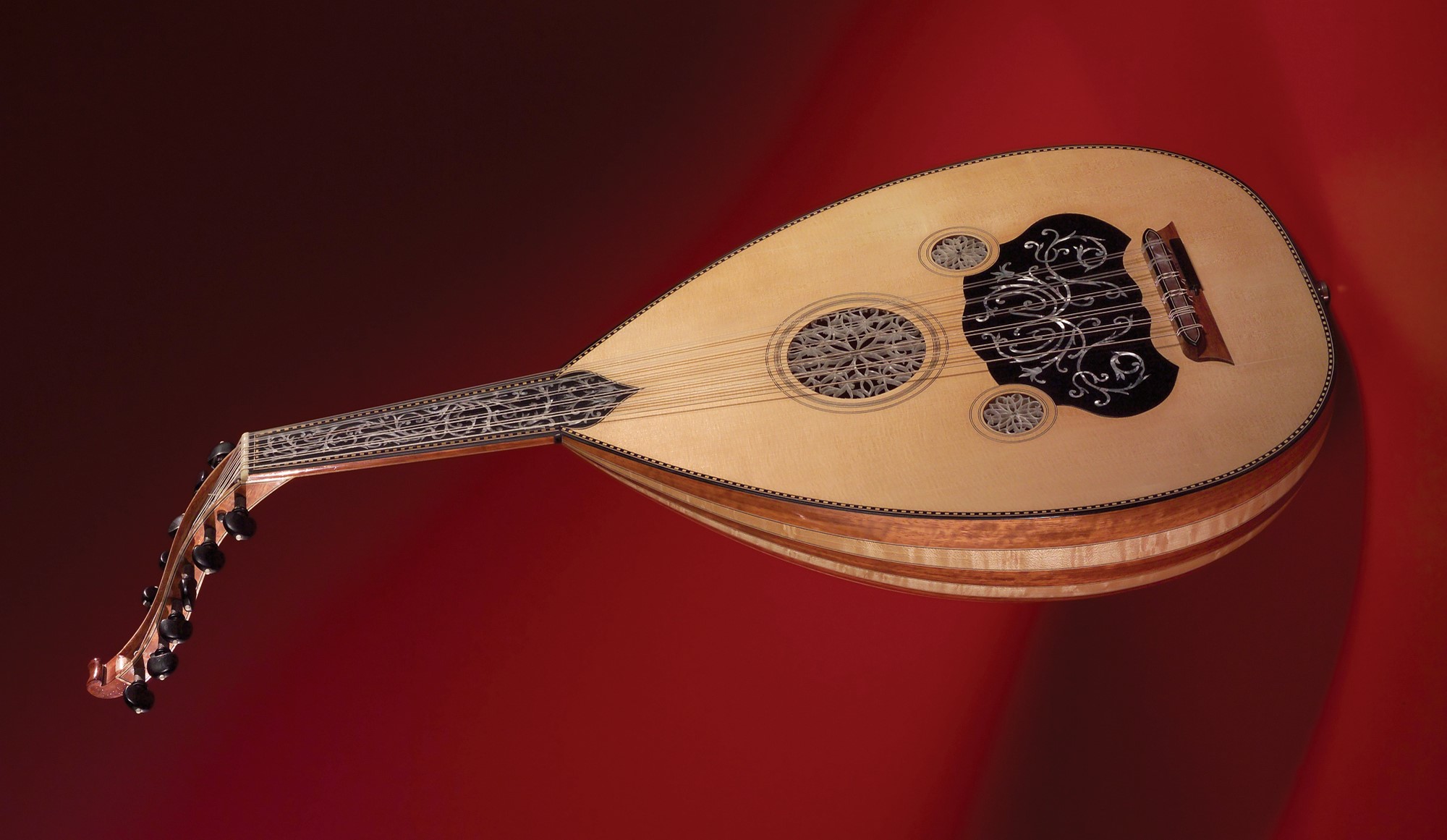A Tribute to Oud
“Ecoute les mélodies qu’exhaltent
les luths des amants
Ce sont les vrais psaumes de David
Ne plonge ni dans le passé
ni dans l’avenir
Que ta pensée ne dépasse pas le moment!
C’est le secret de la paix”.
“Hark the melodies
which lovers’ lutes exhale
They are the true psalms of David
Have no care for Future or Past
Live for the moment
This is the secret of Peace”.
Omar Khayyam
Commonly used in North African and Middle Eastern music, the Oud has a rich and diverse story. The Oud is readily distinguishable from its cousins by its fretless charecteristic and smaller neck.
It has many characteristics similar to other string/plucked instruments. What sets it apart is its lack of frets; this helps users to play slides and vibrato with ease. It usually has eleven strings with the strings converging towards a tapering neck. In order to prevent the pegs from slipping, the pegboxes are bent at a 45-90⁰ angle from the neck to create the necessary tension. The Oud generally has one to three sound-holes, which may be either oval or circular. Strings are generally made of nylon or gut, and are plucked with a plectrum known as a risha or mizrap.
Oud (Arabic: ʿūd, Assyrian:ܥܘܕ ūd, Greek: ούτι, Persian: بربط barbat, Somali: cuud or kaban) is one of the most popular instruments in Middle Eastern music. Its name is derived from Arabic for ‘wood’. Historically the instrument has been found among the Sumerians, Akkadians, Persians, Kurds, Babylonians, Assyrians, Greeks and Egyptians. According to a legend, the origin of the instrument was inspired from the shape of the bleached skeleton hung by a tree. According to musicologist Çinuçen Tanrıkorur today’s Oud is derived from the kopuz by Turks near Central Asia.
Apart from the shape and construction what sets Oud music apart from other string instruments, is the tuning used for the instrument. The most common string combination is five pairs of strings tuned in unison and a single bass string.
One end of each string is attached to the bridge of the Oud in a specific manner to ensure that it does not slip when it is under tension. The order in which the strings are attached to the bridge and the tuning pegs is shown in the diagram below:

Some examples of tuning the Oud are:
Arab tuning:
The most common Arab tuning is (low to high):
D2 G2 A2 D3 G3 C4
Turkish tuning:
One of the most common Turkish tunings, also known as the ‘Bolahenk’ tuning, is (low to high):
C 2 F 2 B2 E3 A3 D4
Similarly different tunings are used depending on personal taste and style. The Turkish-style Oud has a brighter tone than its Arab counterpart. The secrets of Oud playing were traditionally transmitted orally, from master to student with very little of this information written down. Infact there is no comprehensive book available in English on how to play the oud. A noteworthy book on the Oud method is the “Ud Metodu (Gelenekle Gelecege)” by Mutlu Torun, dealing purely with the Turkish tradition.



